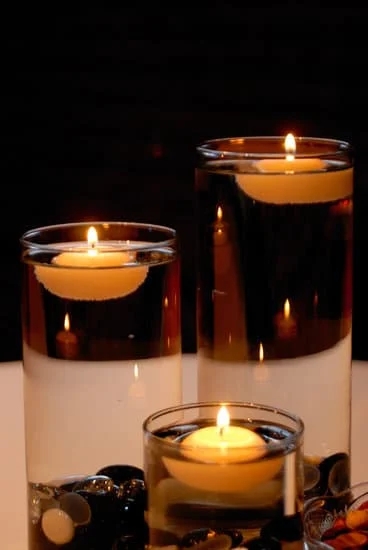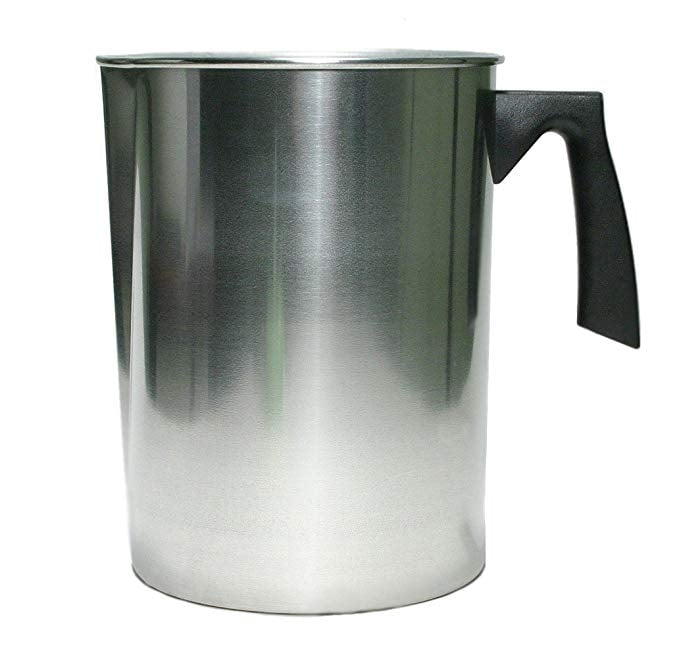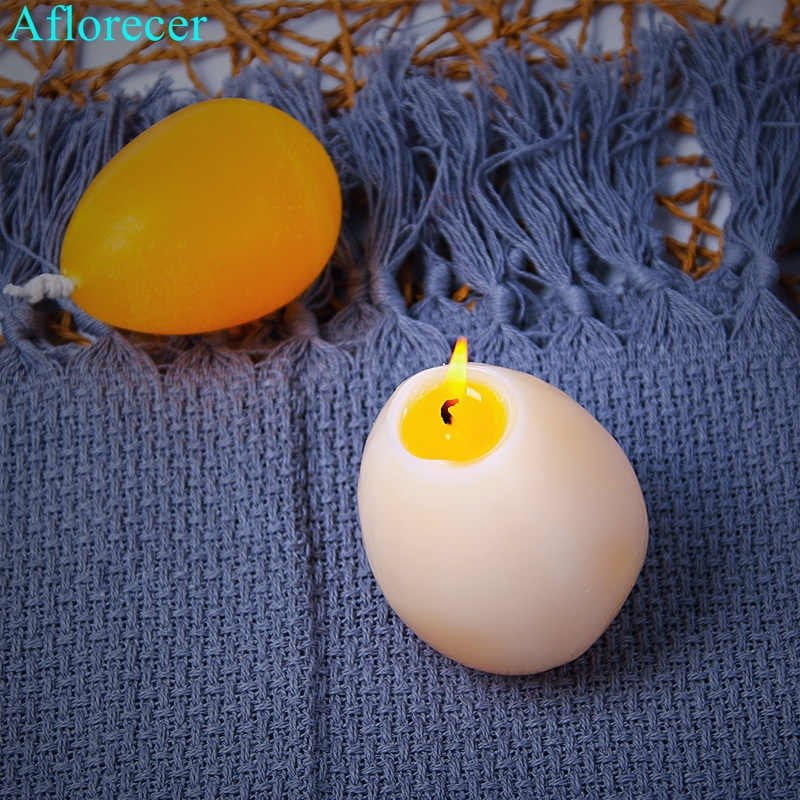Candle making in South Africa has a rich and diverse history, with the craft being an integral part of the country’s cultural heritage. From traditional techniques passed down through generations to modern trends and sustainable practices, candle making in South Africa continues to thrive. Whether you are a seasoned candle maker or a beginner looking to explore this ancient art form, there are numerous opportunities to learn, create, and innovate within the vibrant candle making community.
The South African candle making industry is as diverse as the country itself, with artisans drawing inspiration from their surroundings and cultural influences to create unique and beautiful candles. From elaborate handcrafted designs to simple yet elegant creations, there is something for everyone in the world of South African candle making.
With a focus on using locally sourced ingredients and sustainable practices, many candle makers in South Africa are ensuring that their craft is not only visually stunning but also environmentally friendly.
In this article, we will delve into the history of candle making in South Africa, explore traditional techniques that have been preserved over time, examine modern trends shaping the industry today, and provide step-by-step guides for those interested in making their own candles at home.
We will also take a closer look at popular ingredients used in South African candle making, showcase different types of candles made in the country, discuss sustainable practices within the industry, and highlight upcoming workshops and classes for those looking to further their skills.
Stay tuned as we light up your imagination with all things related to candle making in South Africa.
History of Candle Making in South Africa
Candle making in South Africa has a rich history that dates back to the early days of colonization. When European settlers arrived in the country, they brought with them the knowledge and techniques of candle making. These early candles were typically made from animal fat or beeswax, as these were readily available resources at the time. The production of candles was essential for providing light in households before electricity became more widespread.
Over time, as South Africa developed industrially, candle making evolved to meet the demands of a growing population. The introduction of paraffin wax as a more affordable alternative to traditional materials revolutionized the industry, making candle making accessible to a wider audience. This shift also allowed for greater creativity in candle design and production, leading to a diverse range of candles being made across the country.
Despite the modernization of candle making techniques, there are still artisanal producers in South Africa who continue to use traditional methods passed down through generations. These craftsmen and women take pride in preserving the heritage and culture of candle making in the country. By combining age-old techniques with contemporary designs and trends, they bring a unique touch to the market for those looking for handcrafted candles with a story behind them.
Traditional Candle Making Techniques in South Africa
Candle making has a rich history in South Africa, with traditional techniques being passed down through generations. These techniques often involve using natural resources and handcrafted methods to create unique and beautiful candles. Here are some traditional candle making techniques that have been practiced in South Africa:
- Dip and Carve Method: This technique involves dipping a wick repeatedly into melted wax to build up layers of wax, creating a thick candle. Once the desired thickness is achieved, the candle can be carved or shaped into intricate designs.
- Molding: Molding is another common traditional technique used in South Africa. This method involves pouring melted wax into a mold and allowing it to cool and harden before removing the candle from the mold. Different shapes and sizes of candles can be created using this method.
- Hand-Rolled Candles: Hand-rolled candles are made by rolling sheets of beeswax or paraffin wax around a wick to form a candle. This technique allows for creative flexibility, as different colors and patterns can be incorporated into the design.
These traditional candle making techniques not only produce stunning candles but also showcase the artistry and craftsmanship of South African candle makers. Whether it’s using indigenous materials or incorporating cultural elements into their designs, these techniques highlight the creativity and skill within the local candle making industry.
As modernization continues to influence various industries, including candle making in South Africa, there is a growing appreciation for preserving these traditional techniques as part of the country’s cultural heritage. By blending old-world craftsmanship with contemporary innovation, South African candle makers are able to create truly unique pieces that celebrate both the past and present of their craft.
Modern Trends in Candle Making in South Africa
Local and Sustainable Sourcing
One of the modern trends in candle making in South Africa is a focus on using locally sourced and sustainable materials. Many candle makers are now incorporating indigenous plants, such as fynbos or rooibos, into their candles to create unique scents that reflect the rich biodiversity of the country. In addition, there is a growing demand for candles made from eco-friendly waxes, such as soy or beeswax, which are renewable and biodegradable.
Artisanal and Handcrafted Candles
Another popular trend in South African candle making is the rise of artisanal and handcrafted candles. Consumers are increasingly seeking out candles that are not only beautifully fragranced but also visually appealing. Local artisans are experimenting with different techniques, such as marbling or layering, to create one-of-a-kind candles that serve as both decorative pieces and functional light sources.
Personalization and Customization
In line with the global trend towards personalized products, many candle makers in South Africa are offering customization options for their customers. Whether it’s choosing a specific scent combination, adding dried flowers or herbs to the wax, or selecting a unique container for the candle, consumers can now tailor their candles to suit their individual preferences.
This personal touch adds an extra layer of meaning to the candle-making process and creates a special connection between the maker and the user.
Popular Ingredients Used in South African Candle Making
When it comes to creating beautiful and fragrant candles in South Africa, there are a variety of popular ingredients that are commonly used by candle makers. These ingredients not only contribute to the aesthetic appeal of the candles but also play a crucial role in determining their burn time and scent throw. Here are some of the most popular ingredients used in South African candle making:
- Soy Wax: Soy wax is a natural and renewable ingredient that is increasingly becoming a preferred choice for many candle makers in South Africa. It burns cleaner and longer than traditional paraffin wax, making it an eco-friendly option.
- Essential Oils: Essential oils are a popular choice for adding fragrance to candles in South Africa. These natural plant extracts not only provide delightful scents but also offer aromatherapy benefits, promoting relaxation and well-being.
- Dried Botanicals: Many South African candle makers incorporate dried botanicals such as lavender, rose petals, or eucalyptus leaves into their candles for visual appeal and added charm. These botanicals can add texture and color to the candles, creating a unique aesthetic.
In addition to these popular ingredients, some candle makers in South Africa also experiment with unconventional materials such as coffee grounds, spices, or even recycled wax from old candles to create one-of-a-kind creations. The use of locally-sourced ingredients like indigenous herbs or floral essences adds a distinct South African flair to the candle making process, reflecting the rich cultural tapestry of the region.
Whether you’re a seasoned candle maker or just starting out on your crafting journey, exploring different ingredients can help you unleash your creativity and create candles that truly reflect your personal style and taste. From classic scents like vanilla and lavender to more exotic blends inspired by local flora and fauna, the possibilities are endless when it comes to candle making in South Africa.
With a little experimentation and a dash of inspiration, you can create candles that not only illuminate your space but also uplift your spirit.
Step-by-Step Guide to Making Your Own Candles at Home in South Africa
Candle making is a popular craft that many people in South Africa enjoy, whether it be for personal use or as a small business venture. Making your own candles at home can be a fun and rewarding experience, allowing you to customize the scents, colors, and shapes of your candles to suit your preferences. In this step-by-step guide, we will walk you through the basic process of making candles at home in South Africa.
Gather Your Materials and Tools
The first step in making your own candles is to gather all the necessary materials and tools. You will need wax, wicks, a double boiler or microwave-safe container for melting the wax, a thermometer, fragrance oils or essential oils for scent (optional), and dye chips or color blocks for coloring the wax. Additionally, you will need containers or molds for shaping your candles. Make sure to choose high-quality materials to ensure that your candles turn out well.
Melt the Wax
Next, it’s time to melt the wax. If using a double boiler, place the wax in the top pot and heat over medium-low heat until completely melted. If using a microwave-safe container, heat the wax in 30-second intervals, stirring between each interval until fully melted.
Be careful not to overheat the wax as this can lead to discoloration or burning. Use a thermometer to monitor the temperature of the wax – most waxes should be heated to around 170-180 degrees Fahrenheit.
Add Scent and Color
Once the wax is fully melted and at the correct temperature, you can add fragrance oils or essential oils for scent and dye chips or color blocks for color. Stir well to ensure that both are evenly distributed throughout the wax. The amount of scent and color you add will depend on personal preference – start with a small amount and adjust as needed. Experimenting with different combinations can help you create unique and custom candles that reflect your style.
By following these simple steps, you can create beautiful homemade candles right in the comfort of your own home in South Africa. Whether you prefer soy wax candles with calming lavender scent or vibrant colored beeswax candles with exotic fragrances – candle making is a versatile craft that allows for endless creativity and experimentation. Have fun exploring different techniques and ingredients to find your perfect candle-making style.
Different Types of Candles Made in South Africa
South Africa is known for producing a wide variety of candles, each unique in its design, purpose, and cultural significance. One of the most popular types of candles made in South Africa is the “African-inspired” candle. These candles often feature vibrant colors and intricate patterns that reflect the rich traditions and heritage of the country. They are not only used for lighting but also serve as decorative pieces that add a touch of African flair to any space.
Another type of candle that is commonly made in South Africa is the scented candle. These candles are crafted using a variety of fragrances, from floral to earthy notes, to create a pleasing aroma when lit. Scented candles have become increasingly popular in South Africa as individuals seek ways to enhance their living spaces with inviting scents that promote relaxation and well-being.
In addition to African-inspired and scented candles, South Africa also produces specialty candles such as soy wax candles, beeswax candles, and even eco-friendly options made from recycled materials. These environmentally conscious choices cater to consumers who are mindful of sustainability and prefer products that align with their values. The diverse range of candle types available in South Africa showcases the creativity and innovation present in the country’s candle making industry.
| Types of Candles | Description |
|---|---|
| African-inspired Candles | Candles featuring vibrant colors and intricate patterns reflecting South African heritage. |
| Scented Candles | Candles crafted with various fragrances to create a pleasant aroma when burned. |
| Specialty Candles | Including soy wax, beeswax, and eco-friendly options catering to environmentally conscious consumers. |
Sustainable Practices in the South African Candle Making Industry
The South African candle making industry has been embracing sustainable practices to minimize its environmental impact and contribute to a greener future. One key aspect of sustainability in candle making is the use of natural and renewable resources.
Many candle makers in South Africa are turning to eco-friendly materials such as soy wax, beeswax, and coconut wax instead of paraffin wax, which is derived from petroleum and can release harmful chemicals when burned. By opting for these natural alternatives, the industry is reducing its carbon footprint and offering consumers healthier and cleaner burning candles.
Additionally, recycling and upcycling have become prevalent practices in the South African candle making sector. Some manufacturers source containers like jars or tins from recycled materials, giving them a second life instead of ending up in landfills. This not only lessens waste but also adds a unique touch to the products.
Furthermore, some artisans repurpose leftover wax from previous batches to create new candles, promoting a circular economy within the industry. These initiatives not only benefit the environment but also appeal to eco-conscious consumers who prioritize sustainability.
Moreover, sustainable packaging is another area where the South African candle making industry is focusing its efforts. Many companies are switching to biodegradable or recyclable packaging materials such as cardboard boxes, paper wraps, or glass containers that can be easily reused or repurposed.
By minimizing single-use plastic packaging, the industry is further reducing its ecological footprint and aligning with global efforts towards a more sustainable future. As consumer awareness about environmental issues continues to grow, these sustainable practices are setting a positive example for other industries to follow suit.
| Sustainable Practices | Impact |
|---|---|
| Use of natural waxes | Reduces carbon footprint and offers cleaner burning candles |
| Recycling/upcycling | Lessens waste and promotes a circular economy |
| Sustainable packaging | Minimizes single-use plastic and supports eco-friendly solutions |
Upcoming Candle Making Workshops and Classes in South Africa
Candle making is an age-old tradition in South Africa that has evolved over the years, blending traditional techniques with modern trends to create unique and high-quality candles. As the demand for artisanal products grows, so does the interest in learning the craft of candle making. Fortunately, there are upcoming workshops and classes throughout South Africa that cater to both beginners and experienced enthusiasts alike.
These workshops offer a hands-on experience where participants can learn the art of candle making from skilled instructors. From choosing the right ingredients to mastering various techniques, these classes provide a comprehensive guide to creating beautiful and fragrant candles. Whether you prefer traditional methods or want to explore innovative designs, there is something for everyone in these workshops.
By attending these candle making workshops and classes, not only do participants gain practical skills, but they also contribute to the sustainability of the industry. Many of these workshops emphasize the use of eco-friendly ingredients and practices, promoting a more environmentally conscious approach to candle making. As consumers become more aware of the impact of their purchases, attending these workshops can help individuals make informed decisions when selecting candles made in South Africa.
Frequently Asked Questions
Is Candle Making Profitable in South Africa?
Candle making can be profitable in South Africa, depending on various factors such as the quality of the candles produced, marketing strategies, and target market. With the growing demand for unique and artisanal products, there is potential for success in the candle making business.
What Is Candle Wax Made of in South Africa?
In South Africa, candle wax is typically made from paraffin wax, which is a byproduct of petroleum refining. Paraffin wax is commonly used in candle making due to its affordability, ease of use, and ability to hold fragrance well. Some candle makers in South Africa may also use beeswax or soy wax for a more natural and sustainable option.
How Profitable Is Candle Making?
The profitability of candle making varies depending on several factors like production costs, pricing strategy, market demand, and competition. For small-scale artisanal candle makers focusing on niche markets or offering unique designs, the profit margins can be higher compared to mass-produced candles sold at lower prices.
Building a loyal customer base through quality products and effective marketing can lead to long-term profitability in the candle making industry.

Welcome to my candle making blog! In this blog, I will be sharing my tips and tricks for making candles. I will also be sharing some of my favorite recipes.





